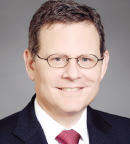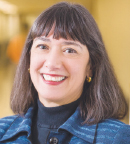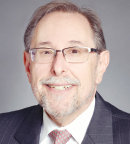Despite progress being made in cancer survivorship—there are currently nearly 17 million cancer survivors in the United States1—not everyone is benefiting equally, especially those patients living in rural communities across America. According to “The State of Oncology Practice in America, 2018: Results of the ASCO Practice Census Survey” report,2 although about 19% of the population live in rural areas, just 7% of oncologists practice there, limiting patients’ access to high-quality cancer care and contributing to worse survival outcomes.
A recent study by the Centers for Disease Control and Prevention found that rural Americans are more likely to die of heart disease and cancer, as well as of unintentional injury, chronic lower respiratory disease, and stroke, than their urban counterparts. In addition, the study found that among rural Americans, more than 70,000 of the deaths were potentially preventable, including 25,000 from heart disease and 19,000 from cancer.3 The factors contributing to poorer health outcomes for rural Americans are many, including higher rates of cigarette smoking, hypertension, and obesity and lower rates of physical activity, as well as less access to health care and health insurance.
Reducing Rural/Urban Disparities in Cancer Care
IDENTIFYING THE root causes of health-care disparities in rural communities as well as solutions to mitigate those causes and improve cancer patient outcomes were the subjects of a day-long discussion held by ASCO called “Closing the Rural Cancer Care Gap,” presented on April 10, 2019, at the National Press Club in Washington, DC. Ensuring equal access to high-quality care for patients with cancer is among ASCO’s highest priorities, said Clifford A. Hudis, MD, FACP, FASCO, Chief Executive Officer of ASCO, during his opening remarks.

Clifford A. Hudis, MD, FACP, FASCO
“At ASCO, we envision a world in which where you live does not determine your likelihood of receiving high-quality care and, fundamentally, whether you get to live. Therefore, we are deeply engaged in understanding and addressing cancer care disparities wherever we can identify them, and, of course, wherever we can act. This includes along racial, geographic, ethnic, and socioeconomic lines,” said Dr. Hudis.
To identify strategies to reduce health-care disparities and improve outcomes for patients with cancer in rural communities, as well as address the needs of oncology providers practicing in these settings, Dr. Hudis announced that this past fall, ASCO convened the Rural Cancer Care Task Force, which comprises a multidisciplinary group of clinicians and other experts in rural cancer care. After analyzing the factors contributing to cancer care disparities, the group has identified four areas where ASCO could better support oncologists and their patients:
1. Provider education and training—Equip all members of the cancer care team, including oncologists, primary care physicians, advanced practitioners, and other non-oncology specialists, with specialized training and support to better prepare them to care for patients during active cancer treatment, throughout survivorship, and at the end of life.
2. Workforce—Improve understanding of the unique needs of the rural cancer care workforce as well as identify and promote opportunities to expand oncology care access for patients in these communities.
3. Tele-oncology—Address broadband access, reimbursement policies, and other solutions that would allow patients to have remote access to cancer care.
4. Research—Develop research to better understand the magnitude of differences in outcomes for patients in rural and nonrural settings as well as enable patients living in rural communities to more easily gain access to clinical trials.
The task force is expected to conclude its work by the end of the year and publish its findings in one of ASCO’s journals.
Lessons Learned on Listening Tour

Monica M. Bertagnolli, MD, FACS, FASCO
MONICA M. BERTAGNOLLI, MD, FACS, FASCO, 2018–2019 President of ASCO, a member of the Division of Surgical Oncology at Dana-Farber/Brigham and Women’s Cancer Center, and Professor of Surgery at Harvard Medical School, also spoke at the ASCO event. She detailed her travels across rural parts of the country this past year, holding town hall meetings to learn first-hand the issues confronting oncologists and their patients in nonurban settings.
“We wanted to learn from our own members in their communities and maybe use [the information] as a springboard to develop better approaches [to providing high-quality care],” explained Dr. Bertagnolli. “My biggest takeaway from this trip is that every place is different. Every place was blessed to have some passionate medical advocates who were trying to solve the problems in those communities,” she said. “It wasn’t medicine saying, ‘This is what you need to do.’ It was medicine going into the community and saying, ‘How can we help you? What do you need?’ And that is an essential feature that I never would have learned had I not gotten on the road and stood side by side with these incredible members of those communities.”
Finding Solutions for Each Community
INCLUDED IN the Closing the Rural Cancer Care Gap event were two discussion panels; they addressed the challenges living in rural areas pose for patients with cancer and potential solutions to improve patient outcomes to close the gap in cancer care for these patients. The panels were moderated by Richard L. Schilsky, MD, FACP, FSCT, FASCO, Senior Vice President and Chief Medical Officer of ASCO. He acknowledged that providing oncology care in rural communities is complicated because each community is unique and there is no one-size-fits-all solution to the problem.

Richard L. Schilsky, MD, FACP, FSCT, FASCO
“The thing that keeps coming back to me is that for those of you who are working in rural communities, we need to start at the ground level. We need to start with the community. We need to get to know the people, get to establish trust, get to understand what their needs are and what their own perceived solutions are,” said Dr. Schilsky. “And a lot of what the rest of us can do is to help each community achieve the goals it sets for itself. There are many things we can do individually, [but] there are even more things we can do together. As Dr. Hudis said at the beginning [of this meeting], ASCO is fully committed now to making this a major initiative over this year and going forward, presumably, for many years to come. We look forward to working with all interested parties in improving cancer care for all people living in rural communities.” ■
DISCLOSURE: Drs. Hudis, Schilksy and Bertagnolli reported no conflicts of interest Dr. Bertagnolli.
REFERENCES
1. National Cancer Institute, Division of Cancer Control & Populations Sciences: Statistics. Available at cancercontrol.cancer.gov/ocs/statistics/statistics.html. Accessed May 2, 2019.
2. Kirkwood MK, et al: The State of Oncology Practice in America, 2018. J Oncol Pract 14:e412-e420, 2018.
3. Moy E, et al: Leading causes of death in nonmetropolitan and metropolitan areas—United States, 1999-2014. MMWR Surveill Summ 66:1-8, 2017.

